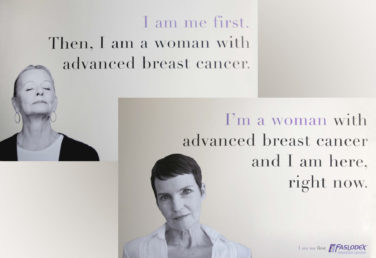PM360 asked experts in reaching healthcare professionals (HCPs) how COVID is changing how they deliver care and how life sciences companies must adjust their engagement strategies. More specifically, we wanted to know:
- How can life sciences companies best support HCPs during COVID and as the delivery of healthcare continues to evolve in our new normal? What kinds of tools, services, and/or innovation can they provide that HCPs would find most valuable (i.e., telehealth support, vaccine educational resources, digital health solutions, etc.)?
- Besides the obvious switch to more virtual or even hybrid engagements, how else must life sciences companies adjust their HCP engagement and education strategies moving forward? What are now or will be the keys to effectively reaching HCPs?
 The COVID-19 pandemic has shifted the HCP and patient relationship drastically. HCPs are adjusting how they deliver care and have seen a significant drop in in-person patient visits including fewer new patients. In the absence of regular in-person check-ins, HCPs are also finding it challenging to monitor patient behavior and improvements. With some of these trends expected to continue post-COVID, HCPs need support beyond traditional brand-focused communications.
The COVID-19 pandemic has shifted the HCP and patient relationship drastically. HCPs are adjusting how they deliver care and have seen a significant drop in in-person patient visits including fewer new patients. In the absence of regular in-person check-ins, HCPs are also finding it challenging to monitor patient behavior and improvements. With some of these trends expected to continue post-COVID, HCPs need support beyond traditional brand-focused communications.
As HCPs continue to use digital channels to treat patients, pharma can support them through telehealth training and other learning resources that help them connect more effectively with their patients. For example, patient service programs and remote monitoring tools ensure adherence to treatment and enable effective interventions while also easing HCP administrative burden. With COVID-19 vaccination programs ramping up globally, HCPs also require resources to combat vaccine hesitancy. Additionally, HCPs will require support for clinical decision-making as the pandemic eases, and there is a rise in delayed diagnoses among new patients. This allows pharma to step in and support HCPs with the right tools and resources.
Companies that can enable HCPs to treat their patients more effectively through relevant services and communication will form more effective partnerships with their customers.
 As the “new normal” continues to evolve, life sciences companies must commit to implementing enterprise-level, long-term solutions to support HCPs. The focus must be on exploring digital-first initiatives capable of streamlining processes and/or integrating diverse offerings to improve HCP access in real time.
As the “new normal” continues to evolve, life sciences companies must commit to implementing enterprise-level, long-term solutions to support HCPs. The focus must be on exploring digital-first initiatives capable of streamlining processes and/or integrating diverse offerings to improve HCP access in real time.
Supporting positive remote experience partnerships with companies at the forefront, such as Doximity, which have integrated in-line solutions for referral management and telemedicine visits are a must. At the brand level, we must develop educational resources on remote healthcare delivery, and improve the remote delivery of samples, copay cards, and patient starter kits to stimulate positive brand experiences from the outset.
Life sciences companies must also adapt their engagement model to improve on-demand access to educational tools, manufacturer support, and resources to establish mutually beneficial relationships. Integrated solutions have been highly touted, and less often available. For the first time, industry-wide resources for key contacts, information, and services have become available through MyVeeva for Doctors—the first solution to fully integrate access to sales representatives, medical liaisons, and approved supportive documentation. Solutions in this vein will continue to push life sciences to a more customer-centric model, elevating the needs of the customer over the wants of the brand.
 The COVID-19 pandemic has had a major impact on physician practices’ patient volumes, operational expenses, staff availability, business operations changing, and revenue. Field teams focused on access and reimbursement can address some pain points so providers can focus on what matters most: the patient.
The COVID-19 pandemic has had a major impact on physician practices’ patient volumes, operational expenses, staff availability, business operations changing, and revenue. Field teams focused on access and reimbursement can address some pain points so providers can focus on what matters most: the patient.
Since the onset of the pandemic, millions of Americans have lost their jobs and their work-based health insurance, creating a heightened demand for support services and financial assistance. However, only about 40% of HCPs reported they were very aware of patient support programs in a survey conducted prior to the pandemic. Far fewer patients were aware of the services—an issue that could’ve been exacerbated as more doctor appointments shifted from in-person to virtual.
Field teams can address this awareness gap and educate providers on a variety of topics including patient affordability for a drug, prior authorization requirements, patient eligibility for copay or product assistance, and relevant health policy topics. As the industry moves toward a more virtual environment, field teams need to leverage digital platforms and solutions, like a reimbursement toolkit, to simplify and streamline the provider experience and ensure providers and patients have efficient and timely access to the reimbursement and access resources they need.
 We are all seeking support navigating the post-COVID world, and HCPs are no different. Although the newly embraced digital platform for communication can increase opportunities for connection via the convenience of email, recognize that HCPs may be overwhelmed and may not have the time to review multiple messages.
We are all seeking support navigating the post-COVID world, and HCPs are no different. Although the newly embraced digital platform for communication can increase opportunities for connection via the convenience of email, recognize that HCPs may be overwhelmed and may not have the time to review multiple messages.
Foster a sense of partnership with the HCP by acknowledging both the value of their time and the complexity of diagnosing and treating patients during these unprecedented times. Send fewer, more targeted, relevant email messages to HCPs to reflect your empathy and understanding. Consider personalizing these messages as much as possible and creating short video messages to increase interest and engagement.
In addition, HCPs may appreciate information and education to support telehealth practices. Potential topics of interest may include how to avoid common issues when treating patients remotely, tips for patients to successfully manage their condition and remain adherent at home, and the introduction of digital patient education, such as short videos or online resources. Also, consider providing information regarding patient access and support as many HCPs have expressed increasing concern regarding treatment affordability.
 It’s all about content and connections.
It’s all about content and connections.
Much of the initial push into virtual engagement has been reactive, consisting of attempts to mirror in-person activity in digital form. Going forward, drawing upon the increased experimentation in communication approaches taken by life sciences companies, we believe that content must have incontrovertible value to foster meaningful engagement. This goes beyond what subject matter gets addressed. How the content is presented warrants more attention than simply directing HCPs to a static website or a talking head video. Strong engagement relies on strong storytelling.
Additionally, peer-to-peer interaction among HCPs has become essential during social distancing of the past year. Using innovative methods to spark and facilitate dialogue among HCPs themselves in these virtual settings can elevate the impact of and interest in engagement with content. This seems to align with emerging macrotrends, exemplified by the popularity of platforms, such as Clubhouse, that are tapping into people’s desire for immediate, authentic connections with others. This has been particularly true for HCPs as traditional forums for in-person scientific exchange lost a degree of intimacy in the rush to adapt those events to the online environment.
 This is the time to find and embrace data. Some marketers did not capitalize fully on the massive data that reps provided to the home office to refine their non-personal promotion strategies. Now that rep activity is down, marketers must re-ignite the data engine internally and seek to create their own repository of data signals at an HCP level to refine their go-to market strategy.
This is the time to find and embrace data. Some marketers did not capitalize fully on the massive data that reps provided to the home office to refine their non-personal promotion strategies. Now that rep activity is down, marketers must re-ignite the data engine internally and seek to create their own repository of data signals at an HCP level to refine their go-to market strategy.
Marketers should contact internal teams—even teams they might not have collaborated with before, such as market access and medical affairs—and find out what data is available. For example, they might find a pocket of HCPs who believe in the efficacy of the brand but based on their engagement with financial messaging and downloads of copay cards, learn that they are extremely cost conscious. These data signals can help to create individual personas or micro segments at the HCP level that can refine how best to go to market. They are golden nuggets that can refine the messaging and marketing strategy for these micro segments.
Invest in a platform that can leverage the data and deploy media in a real-world environment. More refined messages and tailored media approaches will result in higher prescribing and better patient outcomes.








